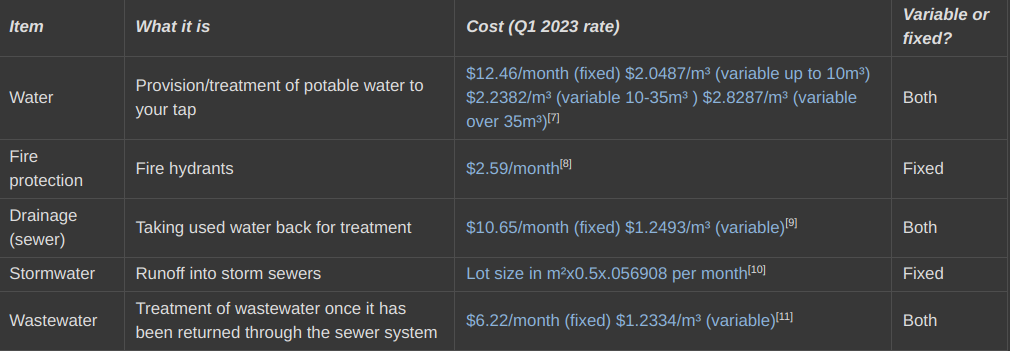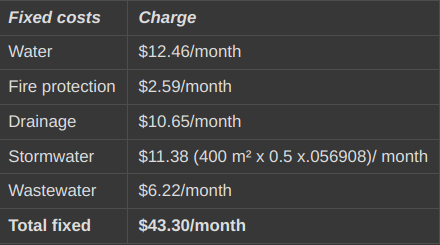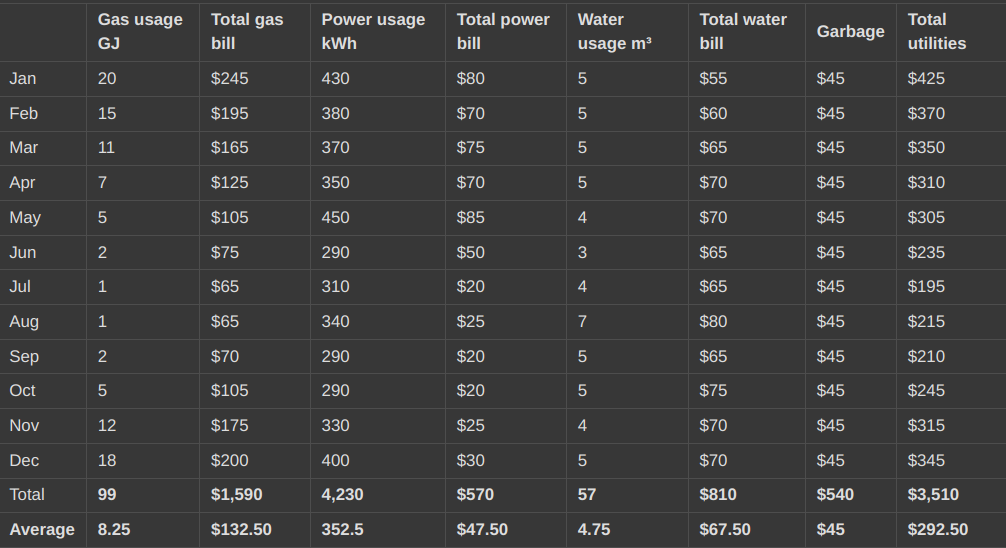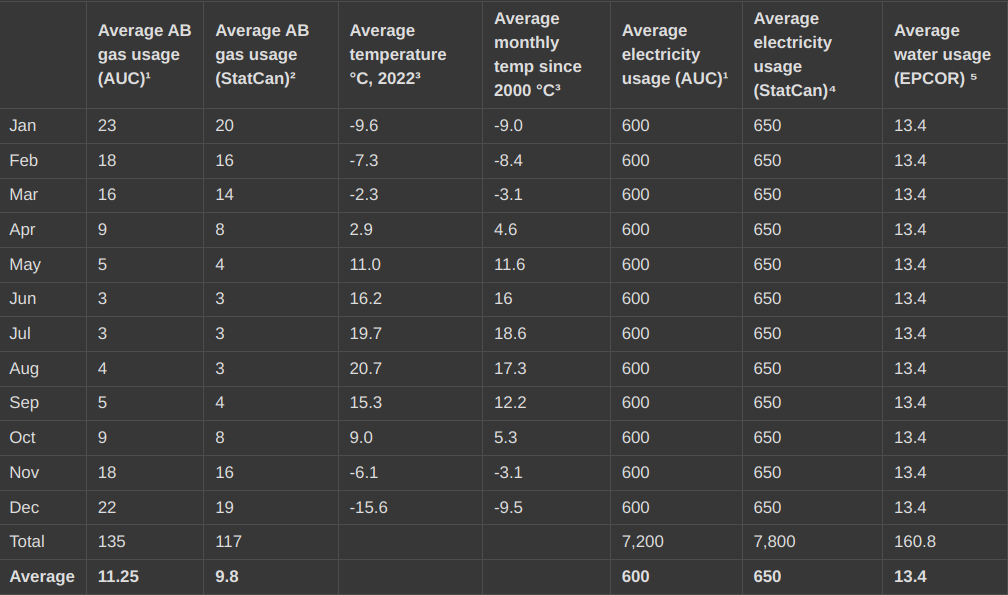Credit: /u/Anabiotic on Reddit
Most people don’t understand how their natural gas bill works. They tend to think everything but the energy charge is fixed and that they have no control over almost all of the bill. However, the variable component of the bill is more than just the energy charge (example below). This distinction is important when considering conservation of energy, and the economics of doing various energy-saving upgrades such as improved windows, a tankless hot water heater, or insulation.
For reference, the typical AB home uses 135 GJ/year, according to the AUC. My guess is that these are old numbers with less efficient furnaces and insulation, and modern usage is lower than this despite the increasing average house size.
Components of your gas bill:
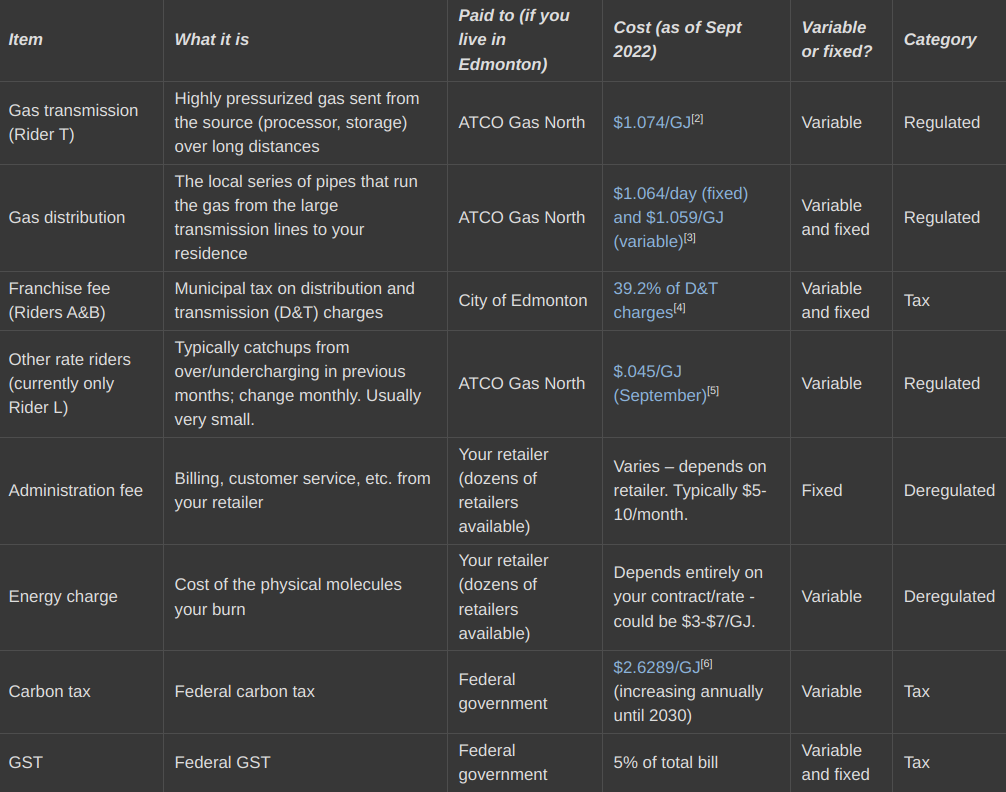
How can you control each component of your bill?
- Deregulated variable: Use less gas or change retailers
- Deregulated fixed: Change retailers
- Regulated variable: Use less gas
- Regulated fixed: Can't do anything unless you disconnect from gas altogether, for example by using an electric hot water heater and heat pump rather than a gas heater/tank and furnace.
You can read about how regulated charges are set here. Essentially, they are approved by the Alberta Utilities Commission (a government body) based on rate applications from the providers, where they have to justify all their costs and then are granted an 8.5% rate of return. You can read all of the rate decisions yourself as they are public . This way of approving rates is essentially the same as it was pre-deregulation. The D&T network is regulated because it's a natural monopoly (does not make sense to have multiple sets of pipes running to your house because of the enormous capital cost).
The actual variable cost of a GJ of gas is not just the energy charge. Below I lay it out using an assumed contract price of $5/GJ. Your rate may be different depending on your contract or if you are on the default regulated rate option (RRO) [more info on this below].
Variable components
Cost of 1 GJ:
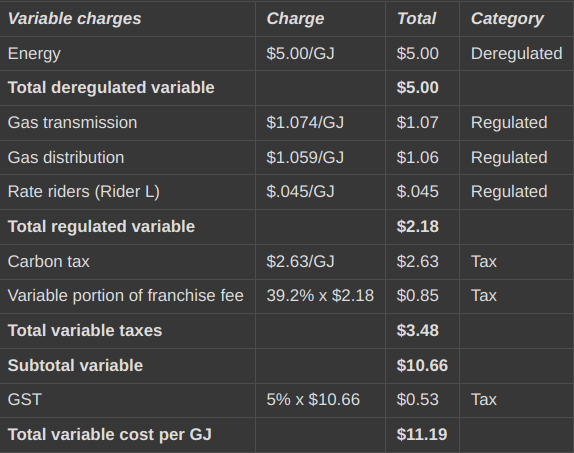
So for each GJ your use in this example, 45% ($5.00) is deregulated, 19% ($2.18) is regulated, and 36% ($4.01) is taxes. Of the above the only one that would change based on your retailer is the energy charge. However, for every GJ you don't burn, you would save $11.19, so in that sense all variable gas is within your control.
Fixed components
Fixed costs typically vary only by the number of days in the billing period. Below I show a typical 30-day billing period with a retailer who charges $6/month as an admin fee. Retailers’ admin fees may vary from $5-$10/month.
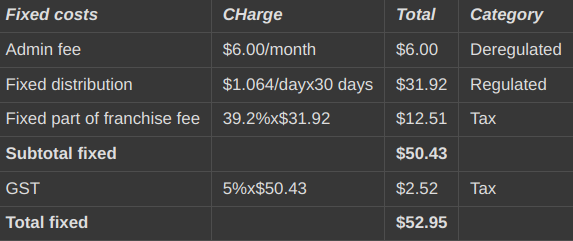
So even if you use no gas, it will cost you $52.95 to maintain service in this example. This is made up of 11% deregulated fees ($6.00), 28% taxes ($15.03), and $31.92 regulated D&T (60%).
So even if you use no gas, it will cost you $52.95 to maintain service in this example. This is made up of 11% deregulated fees ($6.00), 28% taxes ($15.03), and $31.92 regulated D&T (60%).
Summer bill example
If you have a light summer bill where you only use 2 GJs, it would be something like this: $52.95 + $11.19x2 GJ = $75.33; 70% fixed, 30% variable.
- Regulated charges of $36.28 (48%)
- Deregulated charges of $16.00 (21%)
- Taxes of $23.05 (31%)
Heavy winter bill example
A heavy winter bill with 20 GJs of usage would be $52.95 + $11.19x20 GJ = $276.74; 19% fixed, 81% variable.
- Regulated charges of $75.48 (27%)
- Deregulated charges of $106.00 (38%)
- Taxes of $95.26 (34%)
Choosing a retailer
Changing retailers is very simple. You can simply sign up with any retailer and your service will automatically move to the new retailer - typically, signing up takes 5-10 minutes online. Changing retailers only affects the deregulated components of your bill (admin fee and energy charge).
Use the UCA's bill comparison tool to choose a retailer. The UCA website in general is good to understand utility bills. Gas is currently a very volatile commodity, and given the high usage during the winter, I would suggest locking into a low fixed rate that you are able to exit from at any time (read your T&Cs carefully to make sure you can do this).
There are several types of gas rates for the energy component of your bill:
- Variable contracts: You are charged the market price of gas plus a margin for the retailer. I don't recommend this as the RRO is very similar in structure but the margin is a lot less.
- Fixed contracts: You pay the fixed contract rate for the duration of the contract.
- Regulated rate option (RRO): This is the rate you are automatically on if you have never signed a contract or if you old contract expires. The RRO retailer in Edmonton is Direct Energy Regulated Services (DERS). The RRO is essentially a type of floating rate except the rate is set in advance of the month. The markup on the actual gas cost is low, so when gas prices are low this is usually the best option, though DERS does have a high admin fee. You can view RRO rates here and see the volatility: https://ucahelps.alberta.ca/regulated-rates.aspx Each retailer you sign with will also have an admin fee, as shown above in the "fixed" section. This varies by retailer but is almost always a fixed charge per month. This will be in your contract.
A rebate is currently in place when natural gas goes above $6.50/GJ.
TL;DR:
- The variable cost of a GJ of gas is about 2x-2.5x what your energy price is once you include items like various taxes and distribution/transmission
- You have control over a large proportion of your gas bill (at least in the colder months when usage is the highest) since more of it is variable than people typically assume; conservation and energy-saving upgrades may be economic depending on your individual circumstances
- A large portion of the non-energy charges on your bill are taxes to either the federal or municipal government
- Deregulated charges are typically a relatively small portion of your bill but you can affect them through careful choosing of a retailer and paying attention to changes in the offered rates. If you are not on a fixed-rate contract, you can expect large fluctuations in the cost of gas that can drastically affect your bill, especially in the winter. In today's high-cost and volatile gas market, I suggest getting on a low-cost fixed rate contract with no exit penalty so you can switch to a variable rate or the RRO if/when prices drop.
- Even if you use no gas, you should expect a bill of $50-55 - about a third of this is taxes, and most of the rest is regulated (government-approved) charges to maintain the distribution infrastructure.
- Use ucahelps.alberta.ca to find a low-cost retailer for the deregulated part of your bill
